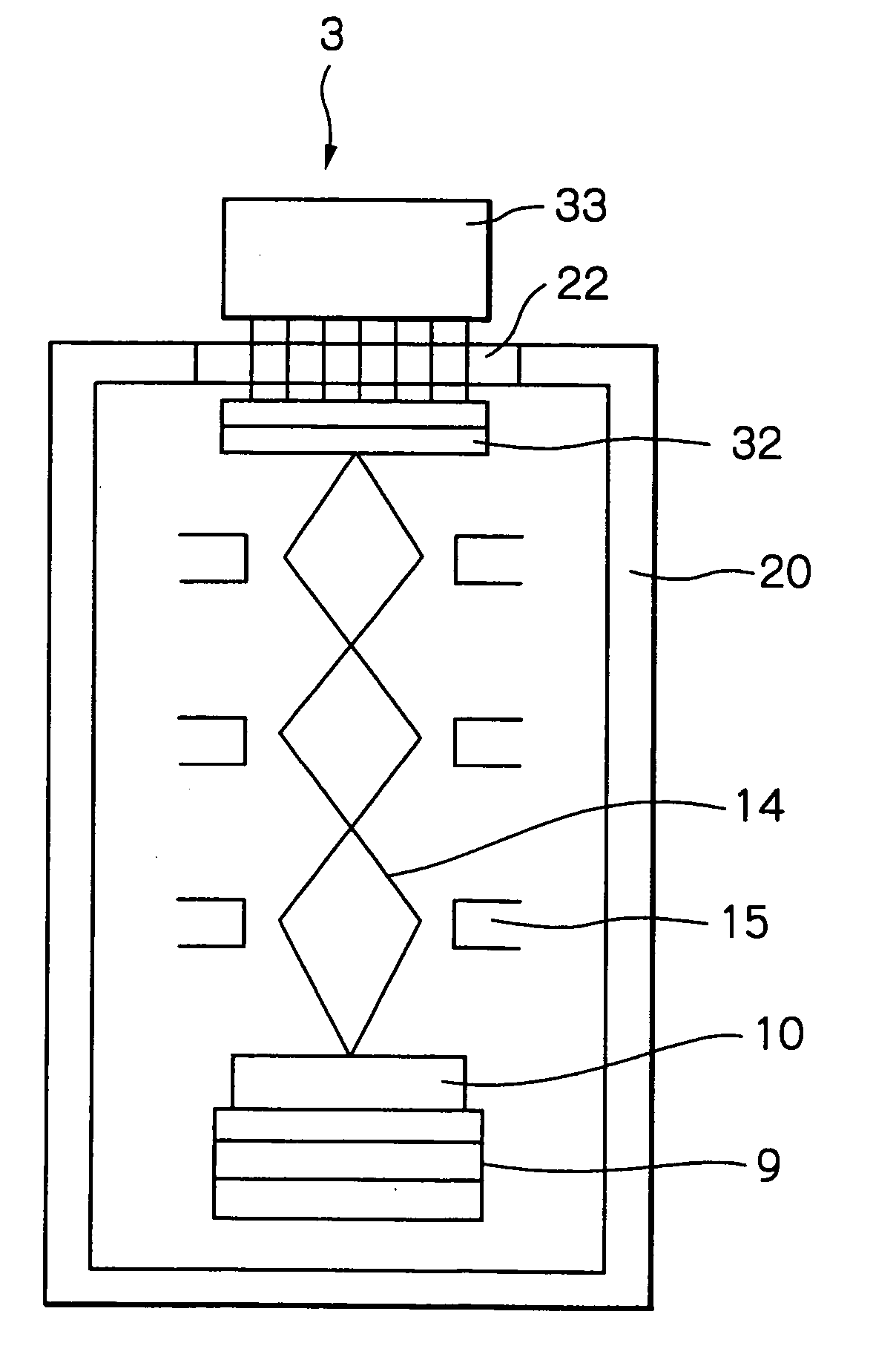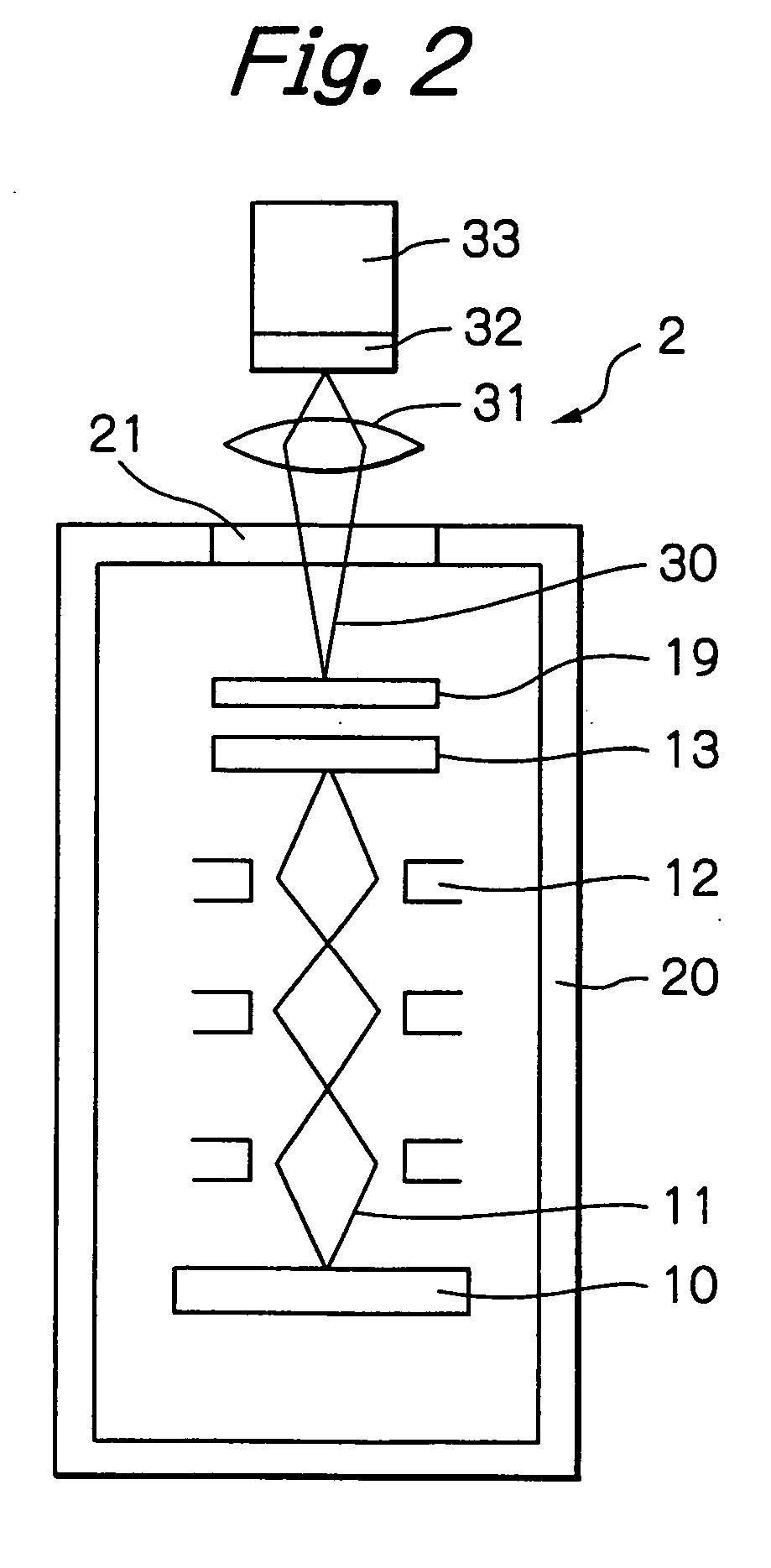Detecting apparatus and device manufacturing method
a technology of detection apparatus and manufacturing method, which is applied in the direction of heat measurement, semiconductor/solid-state device testing/measurement, instruments, etc., can solve the problems of reducing the accuracy of position and resolution, and reducing the cost
- Summary
- Abstract
- Description
- Claims
- Application Information
AI Technical Summary
Benefits of technology
Problems solved by technology
Method used
Image
Examples
Embodiment Construction
[0031]FIG. 3 through FIG. 8 show schematic diagrams of detecting apparatuses according to respective embodiments of the present invention, in which some elements corresponding to those of the detecting apparatuses shown in FIG. 1 and FIG. 2 are designated with the same reference numerals and the duplicated descriptions will be omitted. FIG. 3 is a schematic diagram of a detecting apparatus 3 containing a mapping optical system according to an embodiment of the present invention, in which a sensor 32 comprising an EB-CCD (Electron Beam detecting Charge Coupled Device) is disposed within a vacuum vessel 20. Components including a lens of an electronic optical system (an electrostatic lens) 15, an aperture, a stigmatic element (an element for generating an appropriate distribution of an electric field to compensate for astigmatism or spherical aberration) are disposed within the vacuum vessel 20. A sample 10 is a silicon wafer having a diameter of 300 mm and fixedly mounted on a stage ...
PUM
| Property | Measurement | Unit |
|---|---|---|
| wave length | aaaaa | aaaaa |
| diameter | aaaaa | aaaaa |
| diameter | aaaaa | aaaaa |
Abstract
Description
Claims
Application Information
 Login to view more
Login to view more - R&D Engineer
- R&D Manager
- IP Professional
- Industry Leading Data Capabilities
- Powerful AI technology
- Patent DNA Extraction
Browse by: Latest US Patents, China's latest patents, Technical Efficacy Thesaurus, Application Domain, Technology Topic.
© 2024 PatSnap. All rights reserved.Legal|Privacy policy|Modern Slavery Act Transparency Statement|Sitemap



